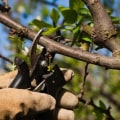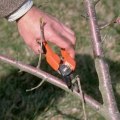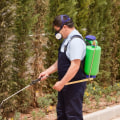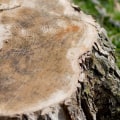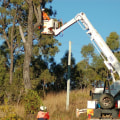Pruning is an essential aspect of tree maintenance that contributes to the overall health, safety, and appearance of trees. When trees are not pruned regularly, they can develop a range of issues that affect their growth, stability, and longevity. Proper pruning removes dead or diseased branches, improves air circulation, and allows sunlight to penetrate the canopy, fostering healthy development. Without routine pruning, trees can become overgrown, structurally weak, and hazardous to their surroundings. Over time, this neglect can lead to safety risks, increased susceptibility to disease, and even premature tree death. Understanding the consequences of not pruning trees highlights the importance of regular tree maintenance for both homeowners and urban landscapes.
Increased Risk of Disease and Pest Infestations
One of the most significant risks of not pruning trees is the increased likelihood of disease and pest infestations. When dead, weak, or diseased branches remain on a tree, they provide a breeding ground for fungi, bacteria, and harmful insects. These infections can spread throughout the tree, weakening its structure and potentially killing it over time. Additionally, dense, unpruned tree canopies can trap moisture, creating ideal conditions for fungal growth and decay. Infected trees become more vulnerable to secondary diseases and infestations, which can quickly spread to other nearby trees, impacting an entire landscape.
Structural Weakness and Storm Damage
Without proper pruning, trees often develop structural weaknesses that make them susceptible to breakage during storms or high winds. Overgrown branches can become too heavy, increasing the likelihood of limbs snapping and falling unexpectedly. This poses a severe hazard to people, vehicles, homes, and power lines. In extreme cases, unpruned trees can topple entirely due to imbalanced growth and weakened trunks. Regular pruning helps shape the tree, distributing weight more evenly and reducing the chances of storm-related damage. Preventative pruning removes potentially hazardous limbs before they become a threat, ensuring the safety of both the tree and its surroundings.
Overcrowded and Unhealthy Growth
When trees are not pruned, their branches can become overcrowded, leading to poor air circulation and restricted sunlight exposure. This congestion prevents inner branches from receiving the necessary nutrients, causing them to weaken and die off. Additionally, trees with excessive, unchecked growth often experience competition among their own branches for resources, leading to stunted growth and a lack of overall vigor. Pruning helps remove unnecessary or crossing branches, allowing the tree to develop a healthier, more balanced structure. By eliminating competition within the tree itself, proper pruning promotes stronger growth and a more resilient tree.
Reduced Aesthetic Appeal and Property Value
Overgrown and unpruned trees can negatively impact the appearance of a property. Trees with tangled, misshapen, or drooping branches can make a landscape look neglected and unkempt. This is particularly important for homeowners looking to maintain or increase property value, as curb appeal plays a significant role in real estate desirability. Well-maintained trees contribute to a beautiful and welcoming environment, while neglected trees can make a property appear poorly cared for. Regular pruning not only improves the shape and structure of trees but also enhances the overall visual harmony of a landscape.
Increased Risk of Falling Branches and Liability Issues
When trees are not pruned, they pose a higher risk of falling branches, which can cause injuries or property damage. Weak or dead branches can break off unexpectedly, especially during strong winds, storms, or heavy snowfall. In urban and residential areas, falling branches can damage cars, roofs, fences, and other structures, leading to costly repairs. If a tree branch from a homeowner’s property falls and injures a neighbor or a passerby, the property owner may be held liable for damages. Regular pruning helps eliminate these risks by removing hazardous branches before they become a danger.
Interference with Power Lines and Infrastructure
Unpruned trees can also grow too close to power lines, telephone cables, and other infrastructure, leading to potential hazards and service disruptions. Overgrown branches can cause power outages if they come into contact with electrical lines, creating dangerous situations for both residents and utility workers. In many cities, utility companies trim trees near power lines as part of maintenance programs, but property owners are responsible for keeping their trees from interfering with local infrastructure. Allowing trees to grow unchecked can result in emergency tree removals, which are often more expensive and inconvenient than routine pruning.
Encouraging Proper Tree Care and Maintenance
Proper tree care goes beyond just pruning. It includes monitoring tree health, watering appropriately, and addressing any signs of disease or damage early on. For those unsure about how to properly prune their trees, consulting professional arborists or tree care specialists can ensure the job is done correctly. In cases where trees have been severely neglected and are beyond simple pruning, Shreveport tree removal services can assess whether removal or extensive trimming is necessary to maintain safety and aesthetics. Professional tree care not only enhances the health and longevity of trees but also prevents potential risks associated with overgrown or decaying trees.
Conclusion
Failing to prune trees can have significant consequences, including increased disease susceptibility, structural weakness, falling branch hazards, and aesthetic decline. Trees that are not regularly maintained can become safety risks to people and property, especially in areas prone to severe weather. Pruning is a vital part of tree care that promotes strong, healthy growth while preventing costly damage and liability issues. Whether for residential properties, urban landscapes, or commercial areas, regular tree maintenance ensures that trees remain an asset rather than a liability. Investing in professional pruning services or learning proper pruning techniques can go a long way in preserving the beauty, safety, and health of trees for years to come.
